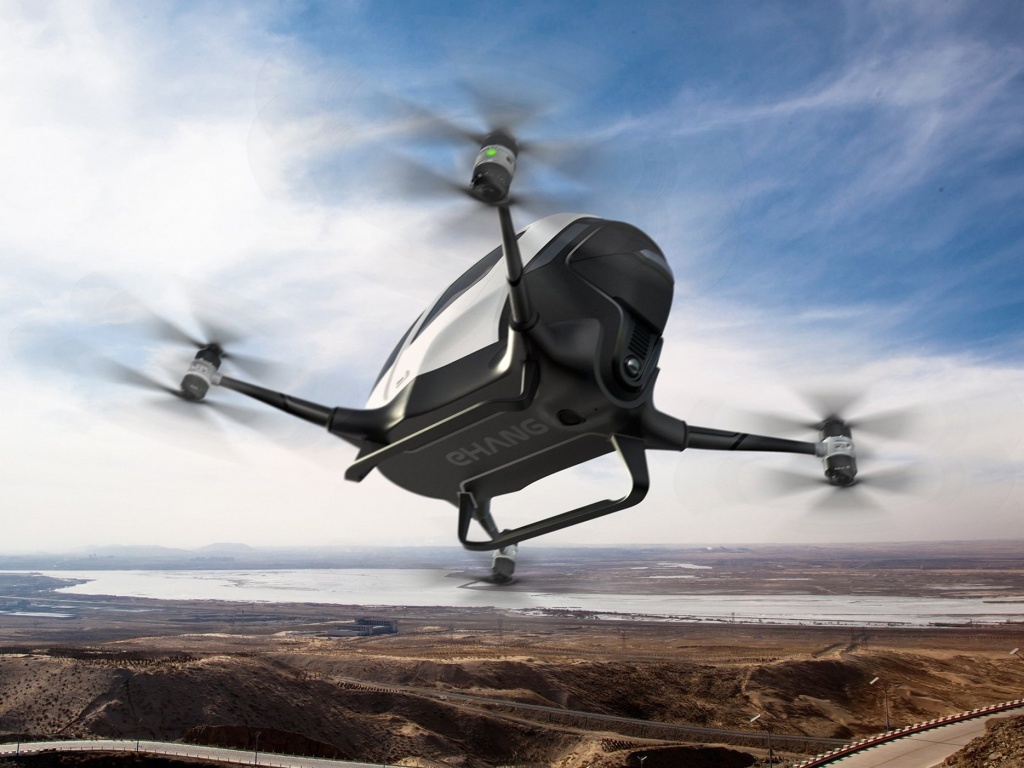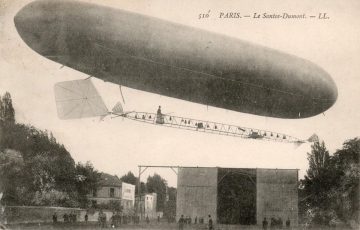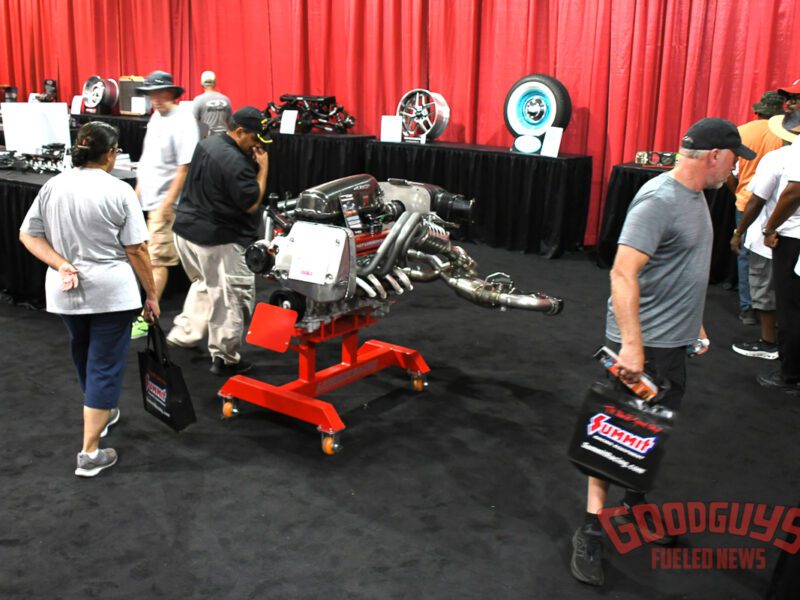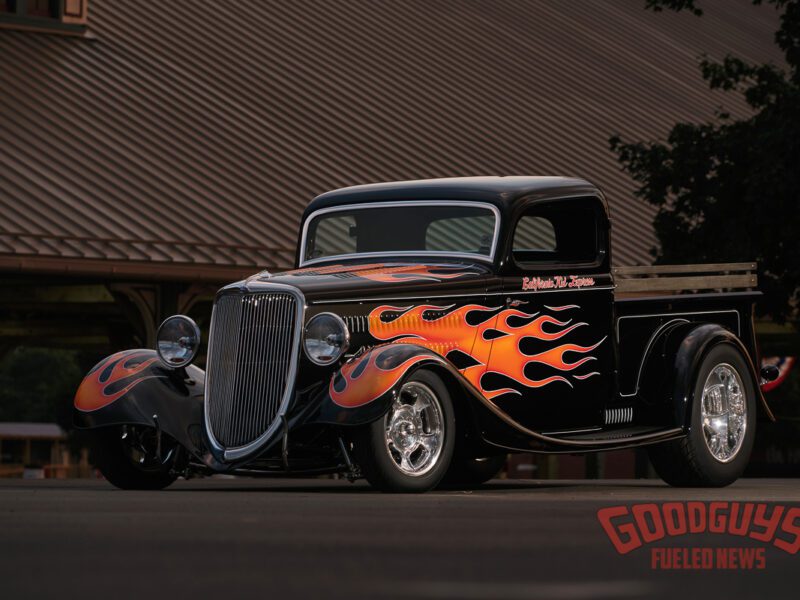Up, Up and Away – The Coming age of Flying Cars
The dream of flying cars has been with us since the late 19th century, a time when both the automobile and the airplane were in their infancy. Since then, nearly every sci-fi flick has featured airborne “cars” silently cruising above a futuristic cityscape. And, who could forget The Jetsons, the 1960s primetime animated series: Flying cars were de rigueur in Orbit City.
Practical attempts at off-the-ground urban travel are more than a century old. In the 1890s, Alberto Santos-Dumont, a Brazilian-born balloonist who lived in Paris, developed a personal motorized balloon, in which he would float above the City of Light to commute to his favorite bistro on the Champ de Elysee. After some perfectly sautéed escargot, Santos-Dumont would hop on his balloon and drift home.
- More than a century ago, Alberto Santos Dumont of Brazil was a flight-obsessed inventor living in Paris. He would float through Paris in 1896 in this motorized balloon — the original Vertical Take Off and Landing technology — to visit his favorite spots in the City of Light.
- The Air Uber “taxi” is another electric-powered, pilotless drone. Uber expects them whirling around a city near you by 2020.
So, while the idea of inner-city “air” transport isn’t new, practical application has always been more Gene Roddenberry than Elon Musk. That is until now. The technical advances in artificial intelligence, GPS, and advanced computer programming have made a Jetson’s future not so far-fetched.
Currently, several companies are working on making flying cars a reality – Uber and Airbus among them. Just last week, Uber held an “Elevate Summit,” in Dallas, dedicated to promote the concept, named Uber Air. (Not to be confused with Air Uber, a Nike shoe for sprinting after your Uber ride.)
Here’s a look a few of the flying cars in the works.
UBER

The Air Uber “taxi” is another electric-powered, pilotless drone. Uber expects them whirling around a city near you by 2020.
By 2020, Air Uber hopes to introduce “taxi planes — a pilot-less, drone-like taxi service. At first, Uber would use a combination of human pilots and automation, before evolving to a fully artificial intelligence-controlled flight network. The ride-sharing giant claims that the eventual cost of a ride would be competitive with today’s Uber trip.
Jeff Holden, Uber chief product officer, described their future service to NPR, “You literally push a button and you get a flight,” he said at the Summit. “A car trip between San Francisco and San Jose can take up to 2 1/2 hours, depending on traffic and this is like a 15-minute flight.”
LILLIUM
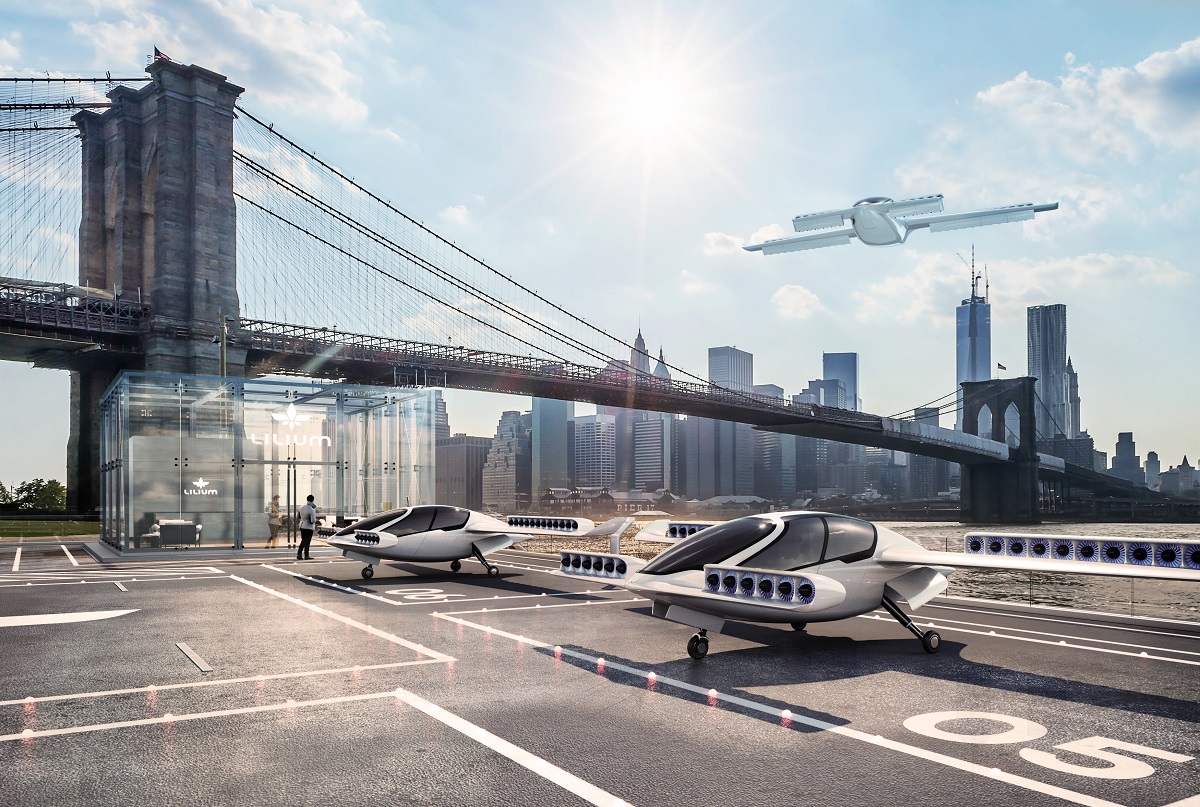
Lillium is working on another electric-powered air taxi, the Lillium Jet, claiming a 200-mile range at “Formula One car speeds” Beautifully imagined, the Lillium Jet looks like something Hollywood CGI artists would whip up.
One barrier to flying cars in congested urban areas is takeoff and landing – like, where to do it. Enter Munich-based Lillium, whose electric-powered jet utilizes the latest Vertical Take-Off and Landing (VTOL) technology. The Lillium jet utilizes a canard design propelled by 36 electric jet motors integrated across the 30-foot wingspan. The company claims a cruising velocity of 300 km/h (186 mph) and a nearly 200-mile range. The cabin can carry five passengers. Takeoff and landing, of course, is vertical.
AIRBUS
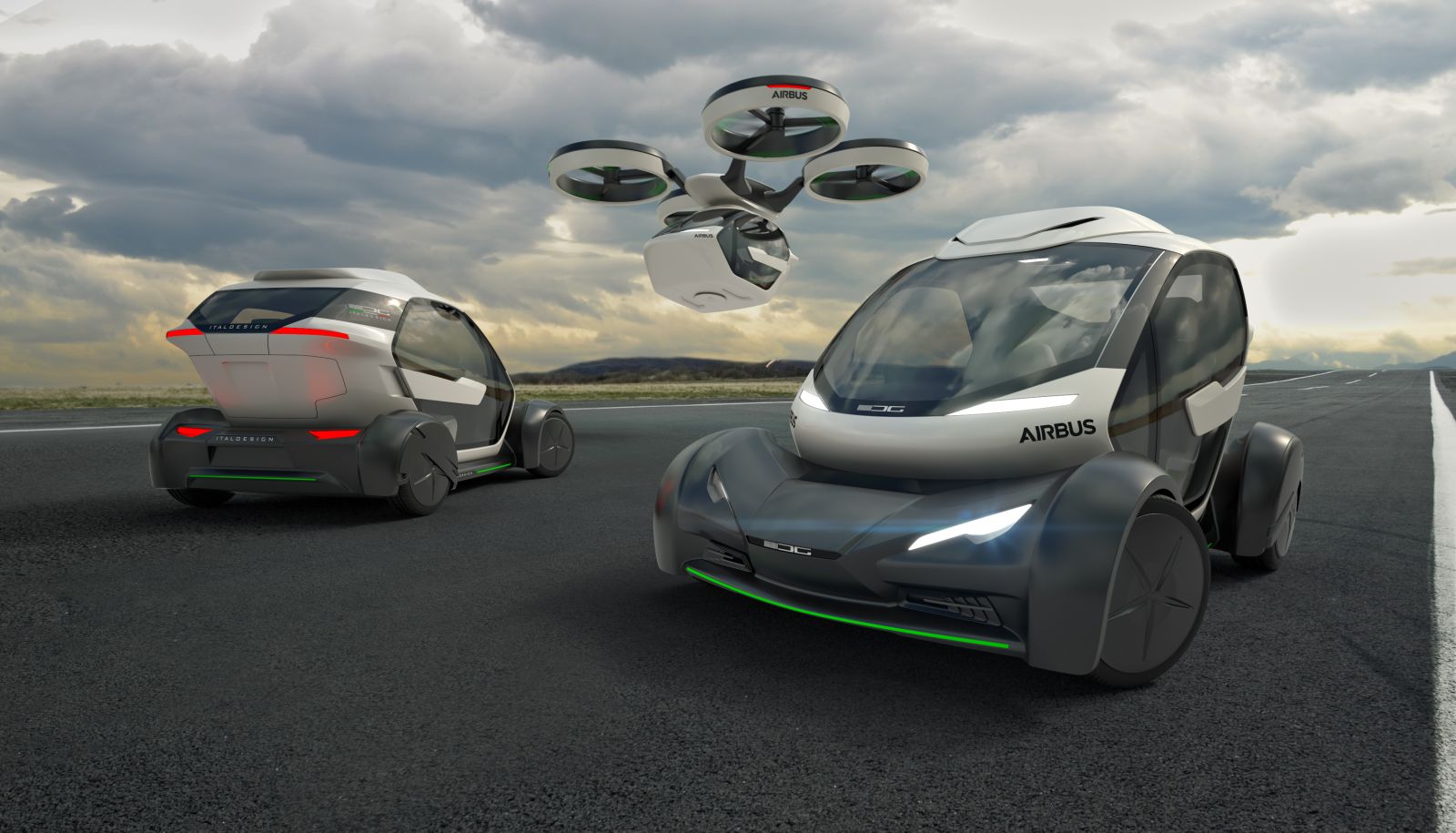
On the ground sans rotors, the Pop.Up looks like an ultra-modern SMART car.
The Euro-based aircraft company Airbus has proposed a bit different approach. Called Pop.Up system, it would employ modular passenger cabins that can be affixed to a set of wheels on the bottom or an array of rotors on the top, depending on whether you’re driving or flying. Like Uber and Lillium, Pop.Up would rely on electric power, for less weight, noise, and pollution.
Airbus CEO Tom Enders is bullish on the concept: “In a not-too-distant future, we’ll use our smartphones to book a fully automated flying taxi that will land outside our front door — without any pilot.”
CITY OF DUBAI
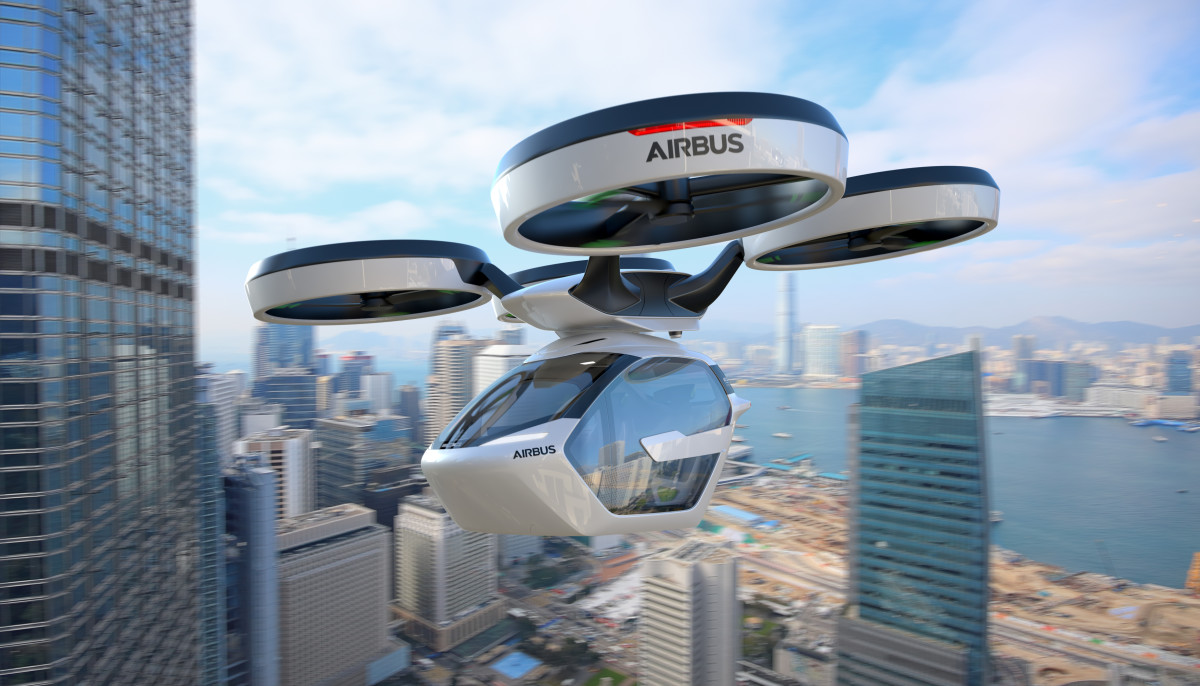
Gotta admit, the Airbus Pop.Up is a slick contraption (industrial designed by Italians, of course). It features an electric power and pilot-free inner-city travel experience. George Jetson would be proud.
In Dubai, that future is now. Dubai, the largest city in the United Arab Emirates, has announced it will unleash a fleet of air taxis this summer, using the Chinese EHang 184 passenger drone. EHang touts its 184 AAV drone as “the safest, smartest and eco-friendly, low altitude autonomous aerial vehicle, aiming at providing medium-short distance communication and transportation solution.”

